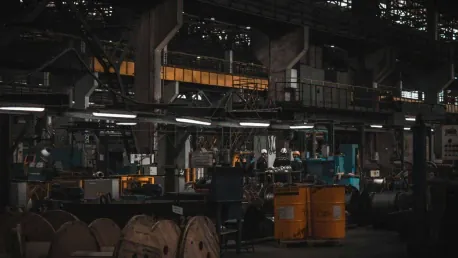The U.S. manufacturing sector has been grappling with significant challenges in recent months, with many pointing to rising costs and economic uncertainties driven by tariffs. Data from the Institute for Supply Management (ISM) in March showcased a contraction in manufacturing output and employment, exacerbated by the effects of these tariffs. The ISM manufacturing index fell by 1.3 points to 49, indicating a contraction due to weaker demand, slowed deliveries, and the pronounced cost pressures from escalating tariffs. Timothy Fiore, of the ISM Manufacturing Business Survey Committee, elucidated that companies are reworking production strategies to contend with the economic headwinds, de-staffing in response to demand ambiguities, and accelerating price hikes attributed to tariffs.
Rising Costs and Economic Uncertainties
One of the primary catalysts behind the downward trend in U.S. manufacturing output has been the inflationary pressures stemming from tariffs. A report by S&P Global Market Intelligence revealed that factory input costs surged at a rate not observed since the pandemic’s supply shock. This has added another layer of complexity for manufacturers as they struggle to manage heightened costs while navigating unpredictable government tariff policies. Chris Williamson, the chief economist at S&P Global, expressed deep concerns about the uncertainties surrounding these policies, which have caused customers to delay or cancel spending altogether, further straining the industry.
By March, the surveys reflected a noticeable shift in sentiment from optimism in January to a cautious outlook. Manufacturers began releasing workers and citing attrition as part of operational strategies. This shift in employment highlights the human cost of economic policies driven by tariffs, impacting many workers within the sector. The compounding pressure of tariffs has forced manufacturers to make difficult decisions, including workforce reductions and reconsiderations of their production plans.
Decline in Orders and Backlogs
The contraction in the U.S. manufacturing sector is also evident through reduced new orders, encompassing both domestic and export orders. Panelists surveyed by ISM reported a decline in new orders, an accelerating drop in order backlogs, and persistently low customer inventories. The compounded issue of tariffs has further strained companies’ ability to maintain profitability, specifically impacting gross profits. One panelist, who chose to remain unidentified, mentioned that orders from significant markets like Canada and Europe have decreased due to retaliatory tariffs, pointing to a broader issue that spans beyond the domestic market.
Federal Reserve Bank of Richmond President Tom Barkin highlighted the potentially adverse consequences of new tariffs, including increased unemployment and inflation. Barkin suggested that companies may lay off workers to enhance efficiency and overcome shrinking profit margins, underscoring the challenging scenario manufacturers face. Despite some level of consumer resistance to price increases post-pandemic, suppliers might still be inclined to pass on tariff costs to the end consumer, leading to further inflationary pressures and complicating the current economic landscape.
Impact on Manufacturing Costs and Employment
The overarching narrative emerging from industry surveys and expert analyses converges on the significant negative impact of tariffs on manufacturing costs, production, and workforce management. The consensus is that tariffs are a substantial contributor to rising input costs, decreased demand, and essential operational adjustments, including workforce downsizing. These elements are interconnected and have created a somewhat grim outlook for manufacturers who are striving to remain competitive in a volatile economic environment.
The nuanced perspectives from various sources highlight the complex interaction between tariffs, consumer behavior, and overall economic health. Manufacturers face a delicate balance, trying to mitigate the increased costs imposed by tariffs while retaining their workforce and absorbing the broader economic impacts. As they navigate these challenges, the broader economy is also impacted, drawing a clear line between policy decisions and their direct consequences on key industries like manufacturing.
Reevaluating Economic Policies
The U.S. manufacturing sector has faced considerable hurdles recently, with many attributing these complications to rising costs and economic uncertainties brought about by tariffs. March data from the Institute for Supply Management (ISM) revealed a contraction in manufacturing output and employment, worsened by the impacts of these tariffs. The ISM manufacturing index dropped 1.3 points to 49, signaling contraction due to diminished demand, slower deliveries, and heightened cost pressures from escalating tariffs.
Timothy Fiore of the ISM Manufacturing Business Survey Committee explained that businesses are restructuring production strategies to navigate these economic challenges. Companies are reducing their workforce in response to uncertain demand and increasing prices to offset the costs of tariffs. This situation highlights the multifaceted challenges the manufacturing sector is currently navigating, as they adapt to global economic pressures and attempt to stabilize their operations amidst growing unpredictability.









